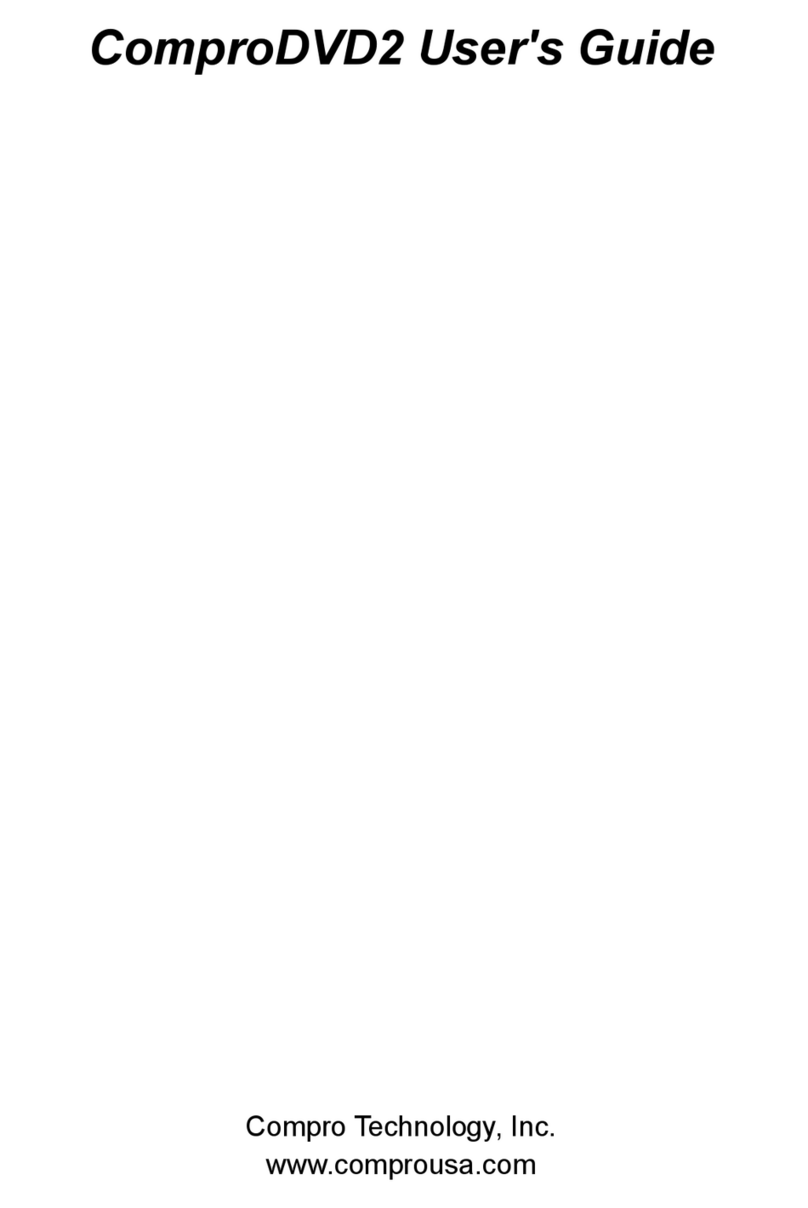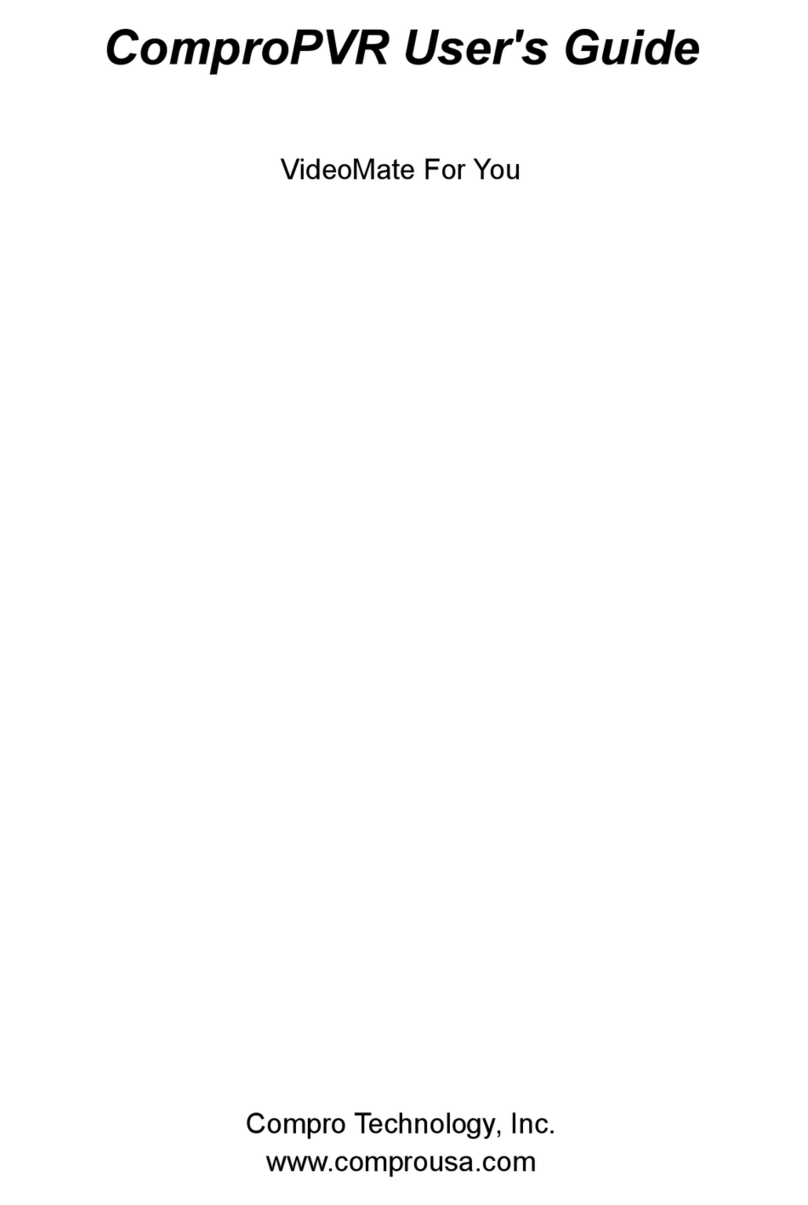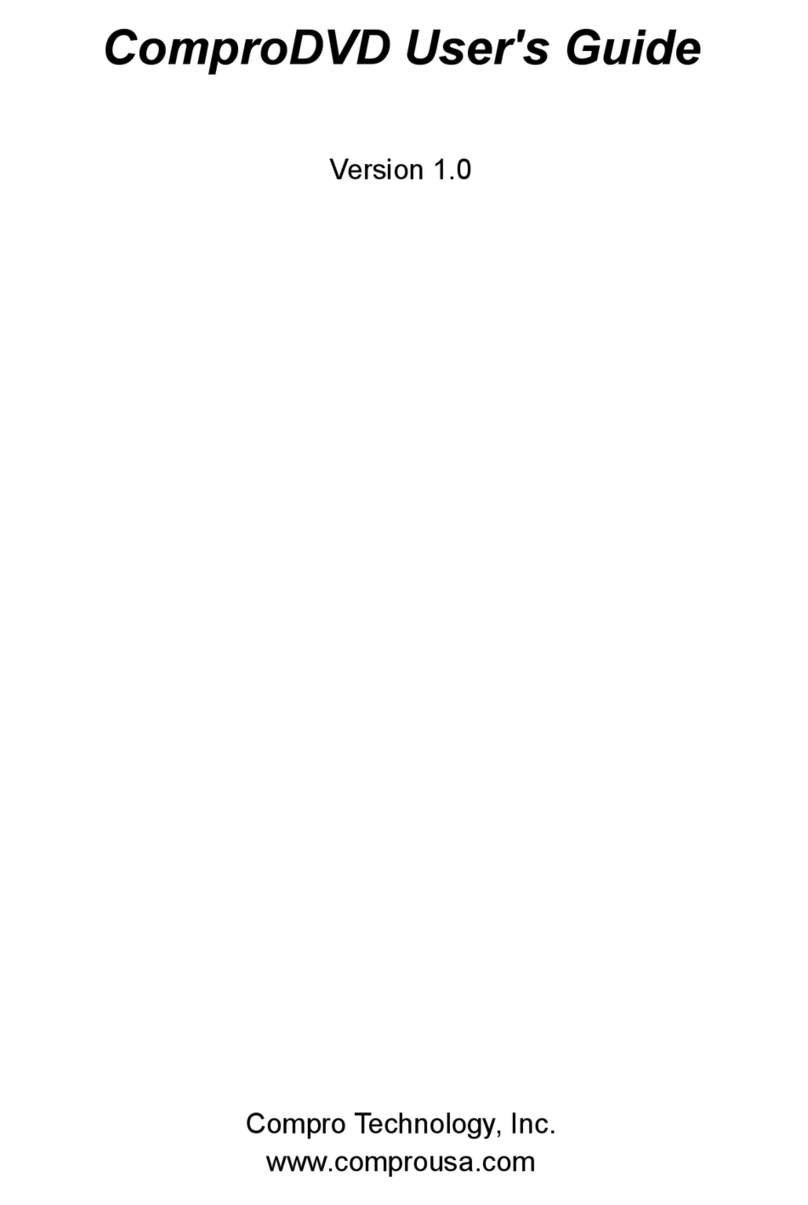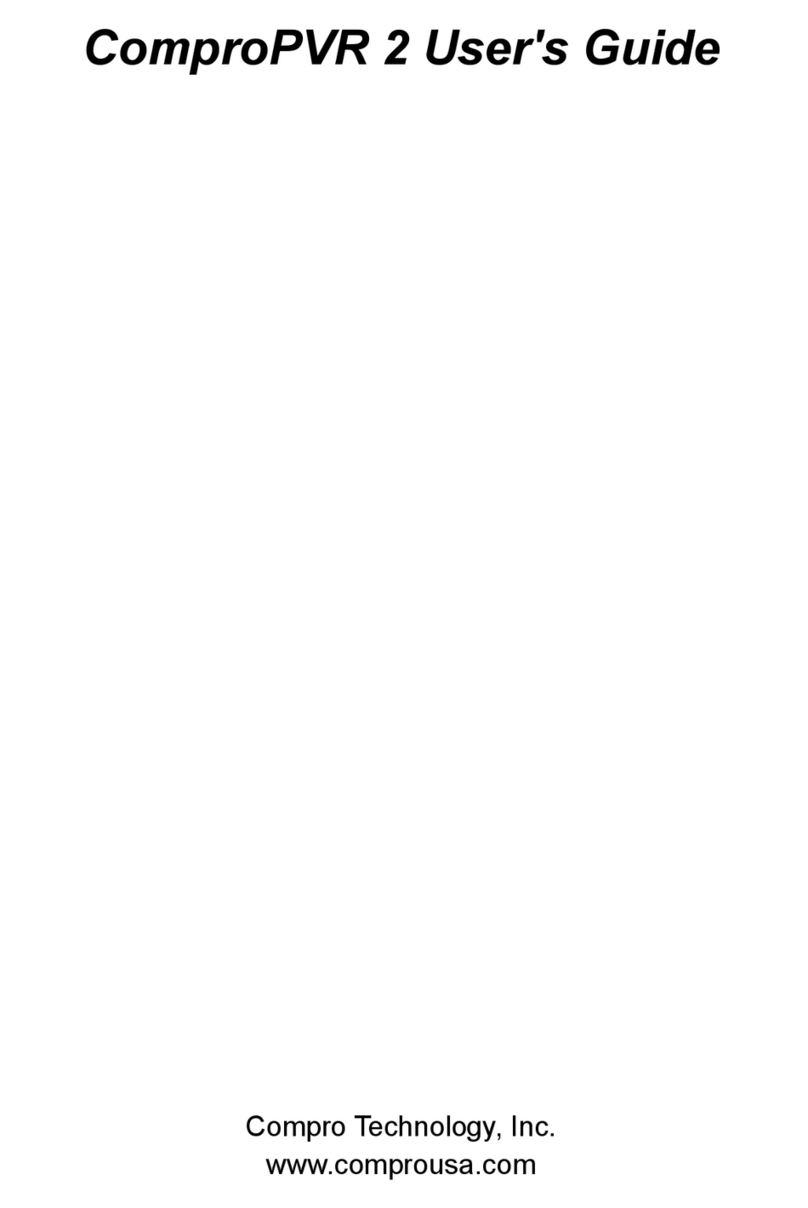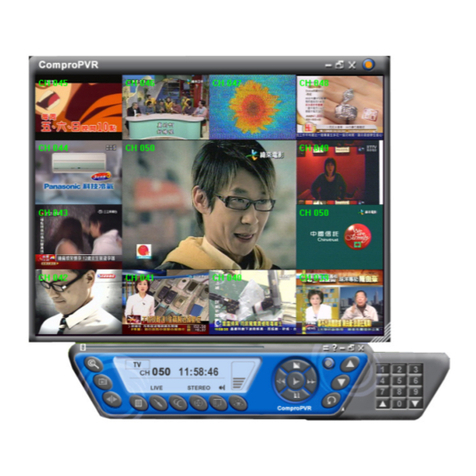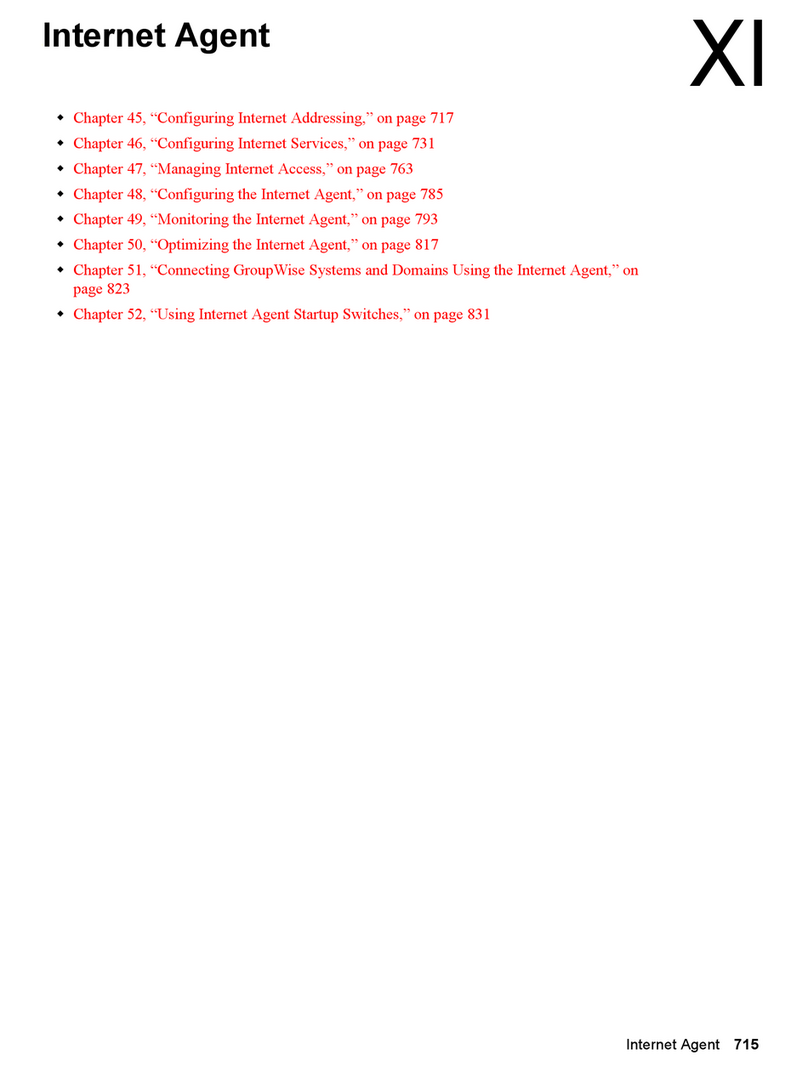2
The disadvantage of this scheme is that it is impossible to perfectly separate the Y and C
signals. If part of the Y signal is treated as C signal, the picture will show rainbow-like color
pattern as known as the Cross-Color Artifact phenomenon. If part of the C signal is treated
as Y signal, the picture will show the vertical or horizontal dot lines color as known as the
Cross-Luminance phenomenon. [Examples are shown later in this guide.]
In other words, better separation of the Y and C signals results in a clearer, sharper picture
with brighter and more accurate color.
Benefits of Y/C Separation
Incomplete separation of the Y and C signals results in Cross-Color Artifact and
Cross-Luminance phenomena. Scientists developed many algorithms trying to solve these
problems. Among them, 2D and 3D Y/C separation algorithms have been widely adopted.
These algorithms are superior to the simple comb filters found on most TV sets today.
Some versions of VideoMate TV incorporate the Y/C separation chip to process Y/C
separation and noise reduction. The chip provides 2D Y/C separation, Digital Noise
Reduction (DNR), and 3D Y/C separation calculations in hardware, greatly reducing
Cross-Color Artifacts and Cross-Luminance problems. Combined with the deinterlacing
technology in ComproPVR, you can enjoy crystal clear video and less eyestrain, giving you
greater enjoyment of TV programs.
Different algorithms are optimal for different types of TV programs, for example, action,
news, or drama shows. 2D Y/C separation, for example, has the side effect of turning
oblique lines into hanging dots while 3D algorithms can cause blurring in action videos.
VideoMate TV can automatically choose the optimal algorithm or you can select the Y/C
separation algorithm that you prefer.
Note
In S-Video, the Y and C signals are already separated and VideoMate TV will automatically
apply noise reduction for better picture quality.
3D Y/C separation algorithm is only available in NTSC system. 2D algorithm and noise
reduction function will automatically be used in PAL system.
Using the Y/C Separation program
Compro Y/C Separation program provides three preset profiles that let you quickly adjust
the picture to your preferences without knowing the details of Y/C separation. Additionally,
TV enthusiasts can configure the Y/C separation settings, in minute detail, to achieve
ultimate picture quality.













